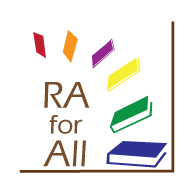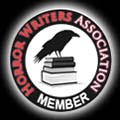Easy access reminds me that I also have an archive of all of my original lists always available in the right gutter of the blog with this link. It includes year end reports on the best horror going back to 2005! Please don’t forget to use it to help patrons. It is a great place to start as you look for titles that might work for your horror patrons.
And now what you have been waiting for..... Becky’s Favorite Horror Reads from 2017...
10. Little Heaven by Nick Cutter: I read this one in 2016 for review in Booklist but it is a 2017 release. This is thoughtful, even philosophical, pulp horror at its best with a compelling dual narratvie. Click here for my full review.
9. Black Mad Wheel by Josh Malerman: I didn’t get around to reviewing this one officially, but on Goodreads I made these notes:
Three words: claustrophobic, aural, steadily building dread
Sound over sight again.
Alternating time frame merging together like Bird Box. Heightens anxiety and makes dread build mercilessly.Again, a dual narrative just like #10, an interesting fact I did not notice until now. This is really a sf-horror hybrid where a sound has been weaponized in the African desert. A rock band is sent there to look into it. In the other storyline, one of the members of the rock band, the only one to make it out of Africa alive, is being treated at a mysterious medical facility in Iowa. This book was ominous, terrifying, original, claustrophobic, compelling, and weird [in a good way].
8. Mapping the Interior by Stephen Graham Jones: Again, I never got around to writing a full review, but I have to say that I think Stephen Graham Jones is my favorite horror novelist these days. Everything he writes is amazing. In this case, Mapping the Interior is a novella that features a Native American teen, coming of age storyline with a menacing horror frame. The protagonist’s dead father appears to have come back to the broken family he left behind, but is he back to help or hurt? Well it’s a horror novel so you can imagine the answer I am sure. The supernatural horror in the novella serves to amplify the true life horrors. And add to it all Jones’ spectaular command of language. His writing is beautiful as it describes horrific things-- always, in everything he writes. It’s quite a treat to behold. You will reread lines. Fast-paced, character driven, and menacing.
7. Kill Creek by Scott Thomas -- An original and terrifying haunted house story which also explores the genre of horror itself. Menancing, thought provoking, and cinematic. Click here for my full review on GoodReads
6. Grip of It by Jac Jemc was the creepiest and most intense haunted house story I have read in years. I had to literally step outside my house to take a breath while reading this one; I couldn’t bear to be in any house it was so terrifying. Again, I didn’t write a full review but I did make these notes on my Goodreads shelf:
Disorienting, so anxious.
Short chapters with POV switching back and forth. Both intense first person.
Husband wife unraveling.The first person narration is so close and intense and switches so quickly and frequently that often you forget who is talking to you, the reader. Also the restraint here is amazing. This is a tightly woven, brisk story, that is terrifying without any gore. Also talk about unreliable narrators. Both are so unreliable, I am still not sure what actually happened. Wow!
5. Hematophages by Stephen Kozeniewski-- Aliens meets The Rising meets The Ruins with a touch of Office Space. You can read my full review here. But in the meantime, just order it. Trust me here.
4. Strange Weather by Joe Hill is a collection of 4 short novels. I gave it a star review in Booklist. You can read my review here. That review includes a quote that HarperCollins is using in their advertising for this bestselling book: "Hill is not only maturing as a writer of relevantly chilling tales, but he is also emerging as a distinct voice for our complicated times."
3. Female horror collections! Yes this is cheating, but seriously, I was blown away by the number of amazing female written horror story collections I read this year. The best by far was Her Body and Other Parties by Carmen Maria Machado which I gave this star review to in Booklist BEFORE it was nominated for the National Book Award. But I also greatly enjoyed Speaking to Skull Kings and Other Stories by Emily Cantaneo and two books which I reviewed for the January 2018 issue of Indie Picks-- Cry Your Way Home by Damien Angelica Walters and and Everything That’s Underneath by Kristi DeMeester. [I will add the link to those reviews when they are available- added 1/17/18]
The point I am trying to make by saying my #3 read of the year is “female horror collections" is that male horror writers better watch out-- the women are coming and they are very good at using the violence and harassment done to them as inspiration for some of the best horror I have read all year.
And finally, my favorite two horror books of the year. They really could be 1 and 1a, but I made myself rank them...
2. Paperbacks from Hell: A History of Horror Fiction from the ‘70s and ‘80s by Grady Hendrix. I “raved” this nonfiction title at ALA this past June. You can click here for a full review. This book is entertaining and informative. Even the author bios in the back are fun to read. I dare anyone who loves books and reading-- especially a good old fashioned mass market paperback from any genre-- to not enjoy this book.
1. In the Valley of the Sun by Andy Davidson. I am on record saying this novel is one of the best debut novels I have ever read, in any genre. Click here to read my starred Booklist review with all of the details. I would just be repeating myself with anything I wrote here in this post.
Finally here is my list of "Honorable Mentions” which barely missed the cut with links to reviews:
- Those Who Follow by The Sisters of Slaughter
- Come to Dust by Bracken MacLeod
- Abode by Morgan Sylvia
These last three “Honorable Mentions” missed the cut for this horror list because they were great but not only horror. Each was a genre blend. I didn’t think it was fair to take a horror best spot from these genre blends, but all three are excellent choices for your patrons. Links are to my detailed reviews.
- Hekla’s Children by James Borgden
- The Corpse and Girl from Miami by John Urbancik
- Ararat by Christopher Golden
And that’s a wrap of 2017, both my reads and on this blog in general. Stay tuned for more Horror in 2018 and beyond.














